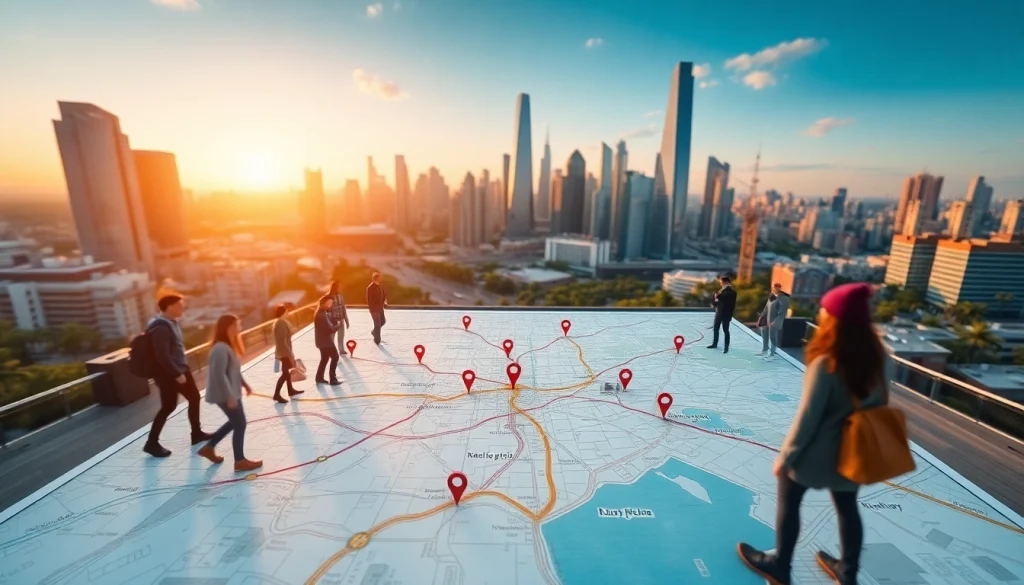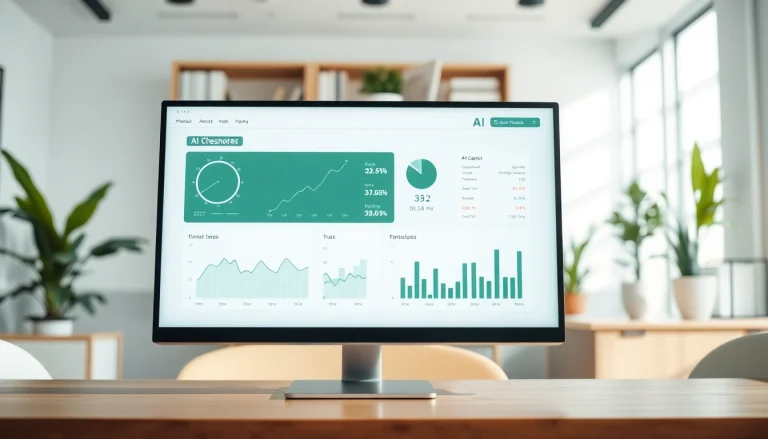
Defining Locations: What They Are and Why They Matter
Understanding locations is fundamental in various domains, from personal navigation to business development. A location can simply refer to a point in physical space, but its significance extends far beyond a mere coordinate on a map. It plays a critical role in shaping human interactions, cultural experiences, and economic activities throughout our lives.
What Constitutes a Location?
A location is often defined by a set of coordinates, such as latitude and longitude, but it encompasses much more. There are several forms of locations, including physical addresses, landmarks, geographic coordinates, and cultural sites. Each of these types provides the context necessary for navigation, planning, and engaging with the environment. In our digital age, “location” can also refer to virtual spaces or digital representations of physical places, which are relevant for applications like social media or e-commerce.
The Significance of Different Types of Locations
Various types of locations, such as residential, commercial, cultural, and natural, play unique roles in our society. For instance, a commercial location impacts business success—proximity to customers can determine sales and revenue. Meanwhile, cultural locations, such as museums and historical landmarks, serve educational purposes and enhance community identity. Understanding these differences is crucial for leveraging their benefits in both personal and business contexts.
How Locations Are Identified and Mapped
Modern technology has revolutionized the way we identify and map locations. Geographic Information Systems (GIS) allow us to visualize locations with layers of information, making it easier to understand spatial relationships and trends. Moreover, smartphone technologies and GPS have enabled real-time mapping and navigation, providing users instant access to information about their surroundings. Collectively, these tools enhance our interactions and empower us to navigate effectively in increasingly complex environments.
Types of Locations and Their Characteristics
Geographic Locations
Geographic locations refer to specific places defined by precise coordinates on Earth. They serve as the foundation for cartography and navigation, and they can describe natural features like mountains, rivers, and forests, or human-made structures like cities and roads. Understanding geographic locations is essential for various fields, including geography, environmental science, and urban planning.
Cultural and Historical Locations
Cultural and historical locations hold significant value in terms of heritage and identity. These can include heritage sites, monuments, and places tied to historical events. They not only reflect the aesthetics of a society but also narrate stories that influence contemporary social norms and beliefs. Efforts to preserve these sites are vital for maintaining cultural continuity and fostering tourism.
Commercial and Residential Locations
Commercial locations refer to spaces tied to business activities. The success of a retail outlet is often contingent on its location—accessibility, visibility, and proximity to customer bases are crucial. On the other hand, residential locations concern people’s homes and living environments. The dynamics of real estate, urban development, and community engagement revolve significantly around these two types of locations.
Leveraging Locations for Business Growth
Importance of Location in Business Strategy
The right location can be a competitive advantage in business strategy. Businesses need to consider factors such as market accessibility, demographic characteristics, and competition density when selecting a location. For example, a coffee shop situated near a university can attract a significant customer base of students and faculty, resulting in higher foot traffic and increased sales.
Location-Based Marketing Techniques
Location-based marketing leverages geographical data to enhance customer engagement. Techniques such as geofencing alerts can inform potential customers of nearby promotions or sales, enticing them to visit a store nearby. Additionally, businesses can use data analytics to better understand customer patterns, allowing them to tailor their marketing efforts to specific demographics and locations.
Case Studies of Successful Location Utilization
Numerous businesses have successfully harnessed the power of location for sustainable growth. One notable case is Starbucks, which strategically places its stores to maximize visibility and customer footfall, often near public transportation and busy intersections. By analyzing customer behaviors and location data, Starbucks can select sites that cater to their target demographic effectively, resulting in increased market share.
Challenges and Considerations When Dealing with Locations
Common Issues in Location Identification
Identifying precise locations can encounter various hurdles such as ambiguous addresses, rapidly changing landscapes, and differences in data accuracy. Incorrect location data can lead to significant business challenges, including lost customers, ineffective marketing strategies, and even legal implications depending on the nature of the discrepancies.
Legal and Privacy Considerations
With the rise of location tracking technologies, concerns about privacy and data protection have become paramount. Businesses must navigate regulations like the General Data Protection Regulation (GDPR) and ensure they handle location data responsibly. Failure to do so can result in hefty penalties and damage to reputation, making it essential to prioritize ethical considerations in location management.
Best Practices for Managing Location Data
To effectively manage location data, businesses should implement a robust strategy that includes regularly updating their information, utilizing reliable data sources, and engaging in customer education regarding their data use. Employing secure systems that restrict access to sensitive location information can enhance data protection while ensuring compliance with privacy regulations.
Future Trends in Location Technology
Innovations in Geographic Information Systems (GIS)
The future of location technology is bright, particularly with innovations in Geographic Information Systems (GIS). Enhanced mapping technologies using 3D visualization and augmented reality will enable users to interact with their surroundings more intuitively. Techniques like machine learning can analyze vast datasets, offering insights into patterns that were previously hidden, shaping effective urban planning and resource allocation.
The Role of Artificial Intelligence in Location Accuracy
Artificial intelligence (AI) is set to play an essential role in improving location accuracy. From real-time traffic analysis to predictive analytics based on historical data, AI can help businesses and consumers make informed decisions. For instance, ride-sharing companies use AI algorithms to predict demand and enhance route efficiency, significantly improving customer experience.
Preparing for Location-Based Services in Business
As technology evolves, businesses must prepare for a landscape dominated by location-based services. Investing in local SEO strategies, developing mobile-friendly platforms, and enhancing customer engagement through location-based applications can all drive success. Additionally, training staff on data management and privacy concerns is vital to navigate future challenges while leveraging the benefits of emerging location technologies.






